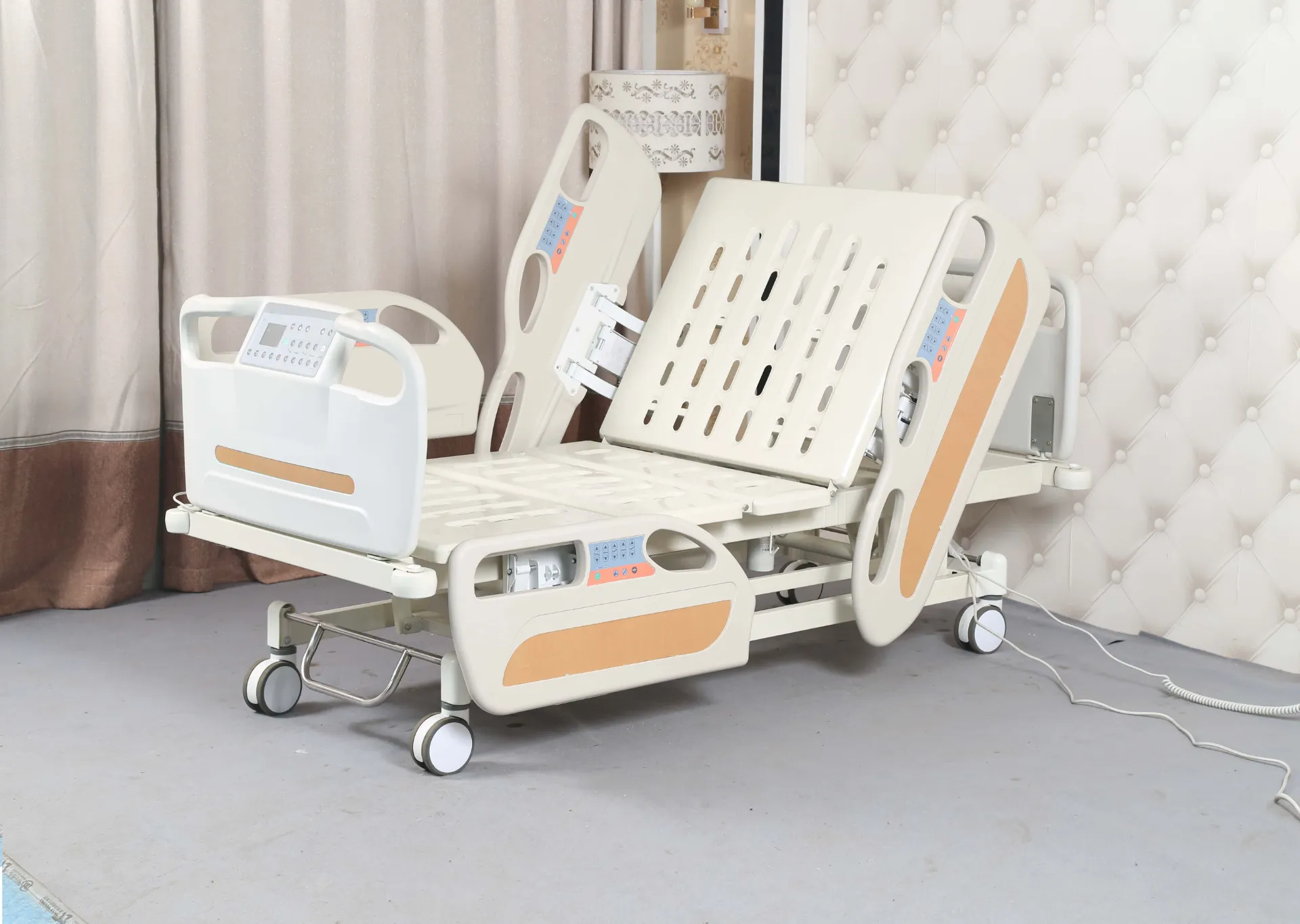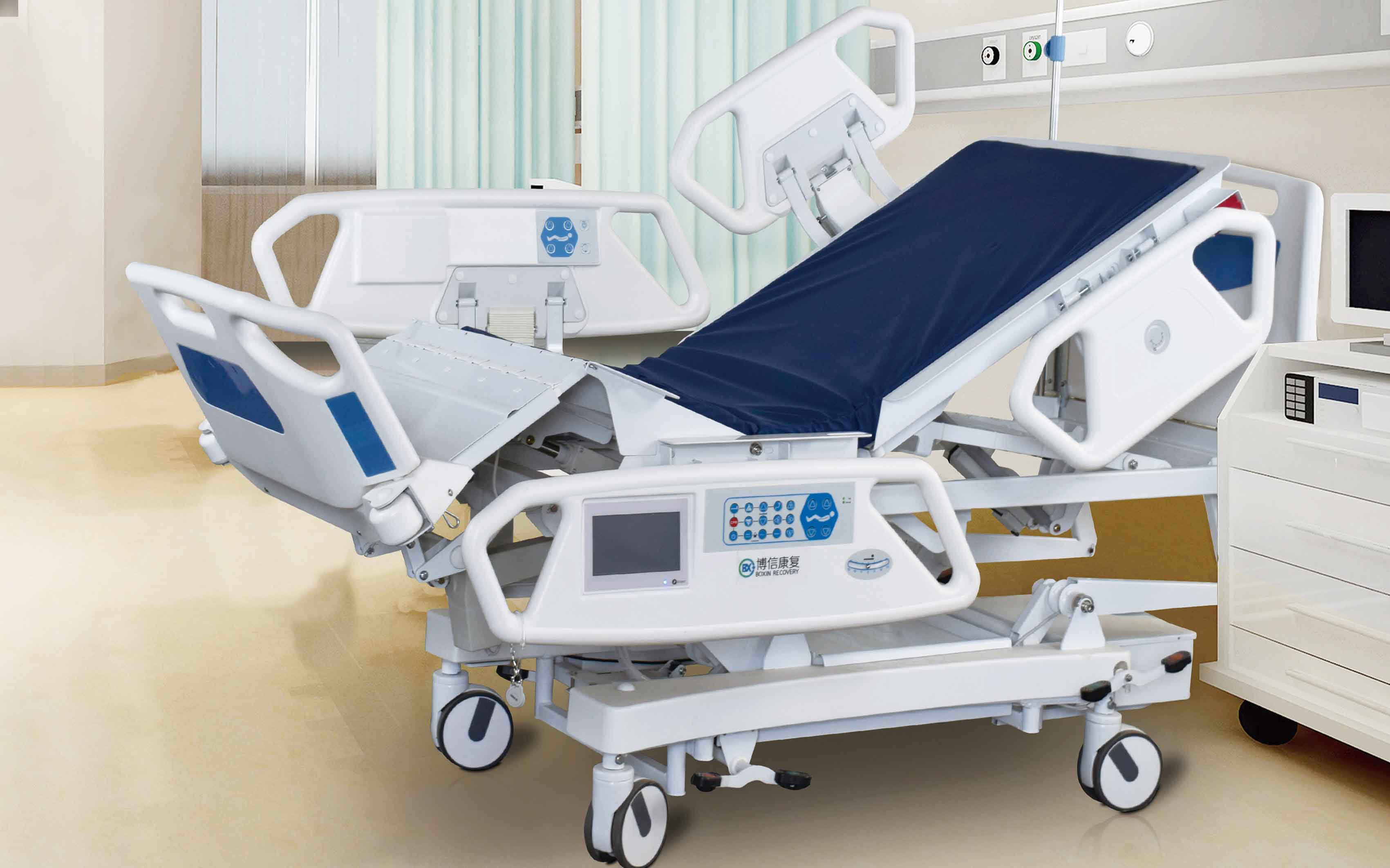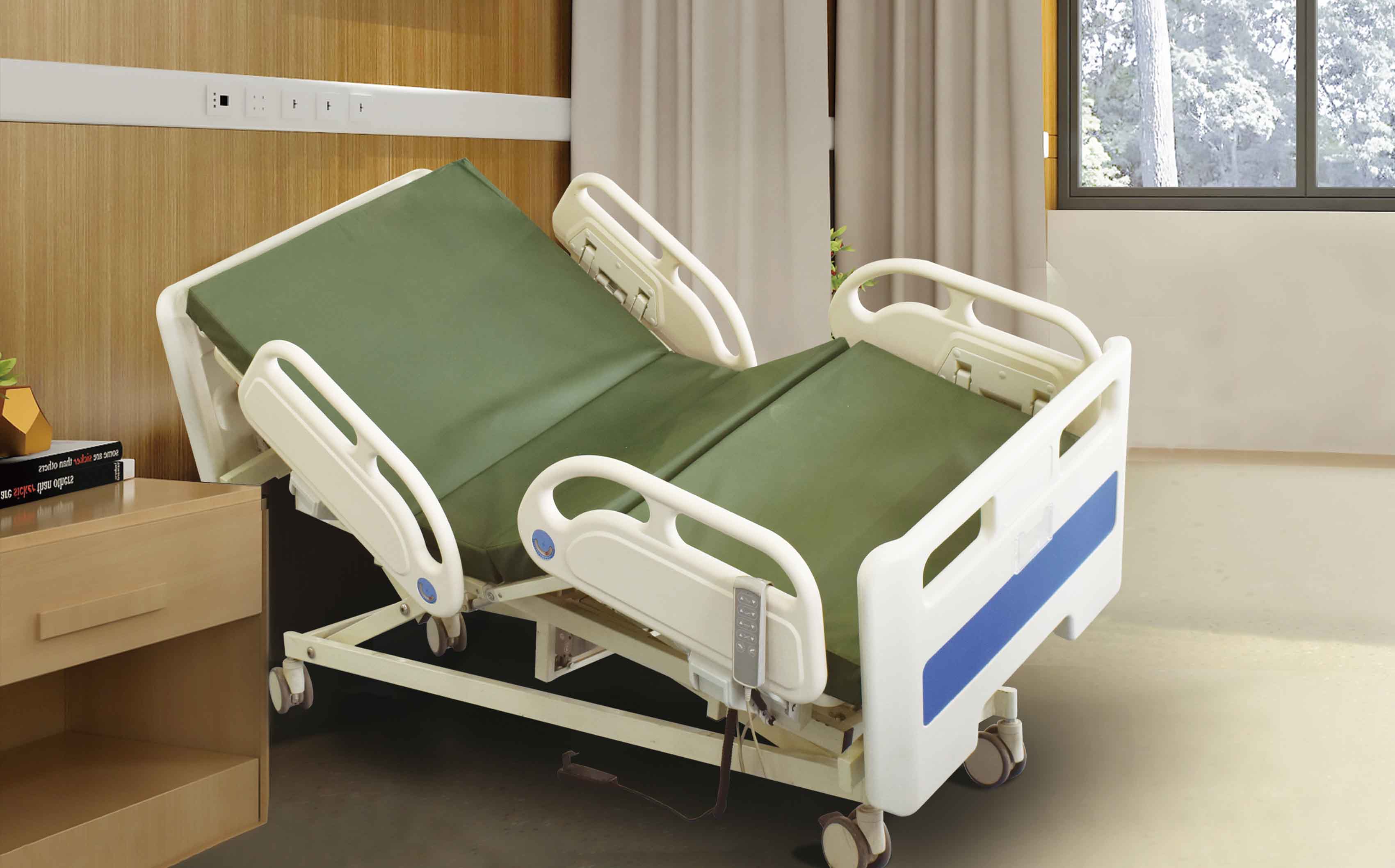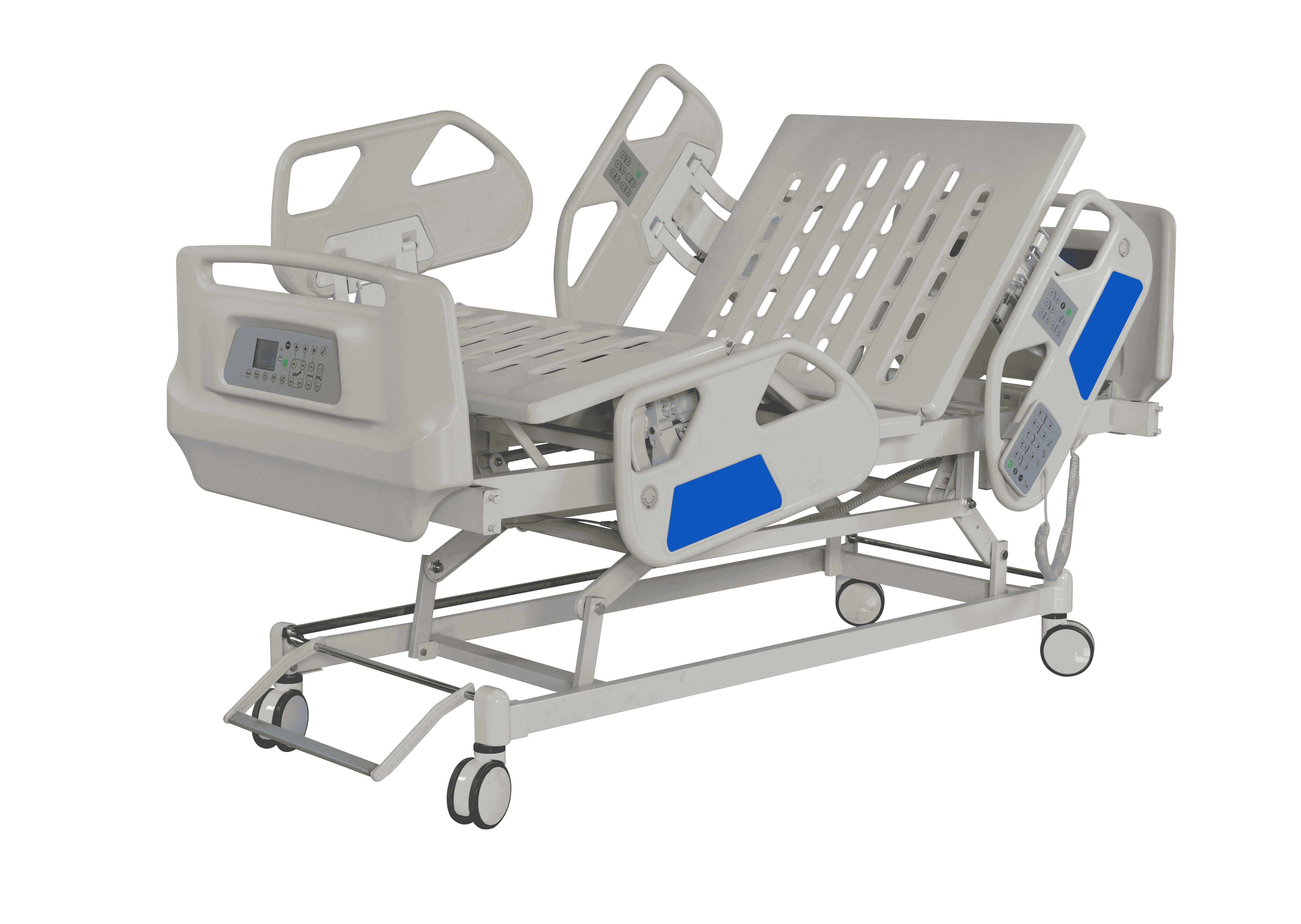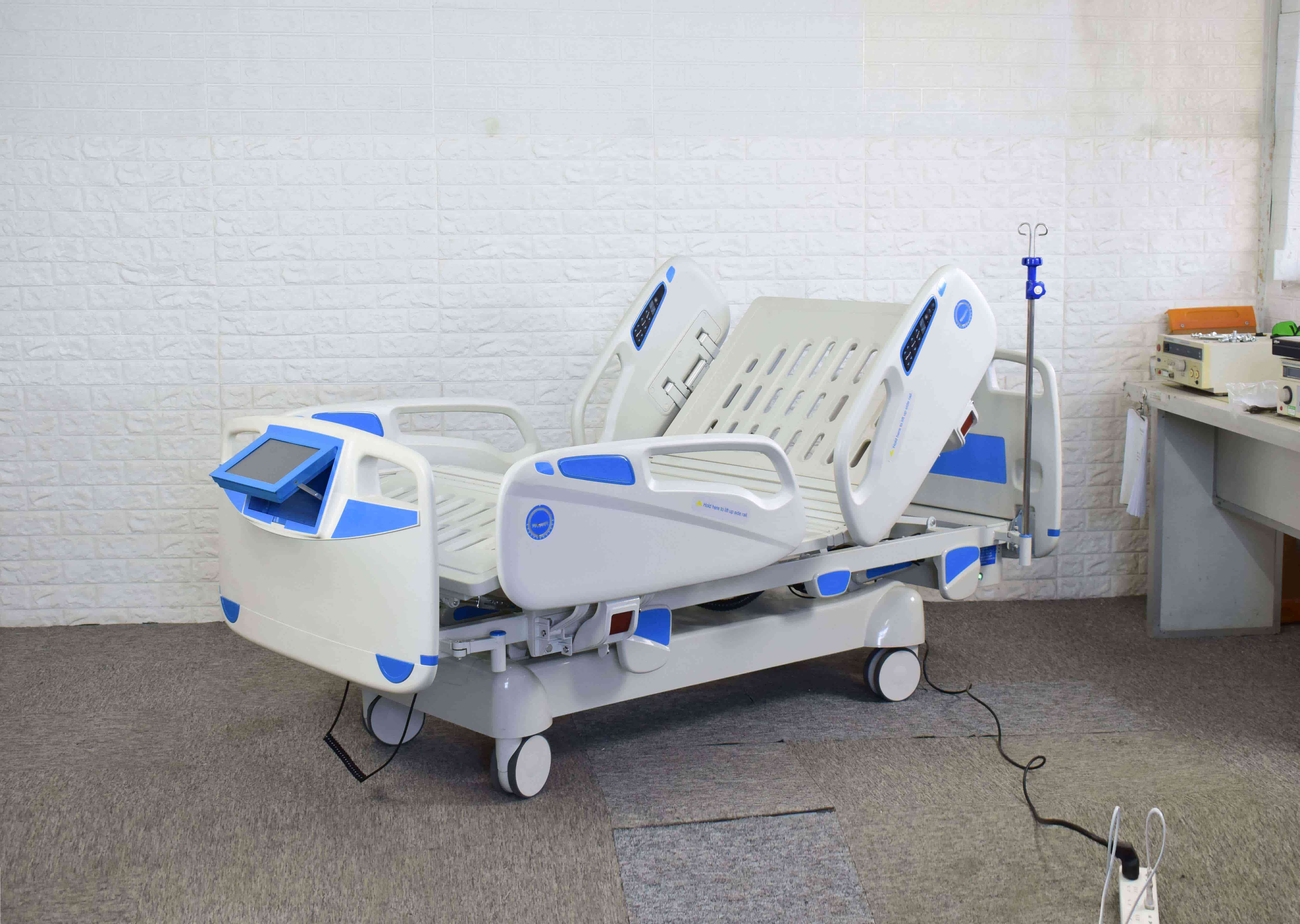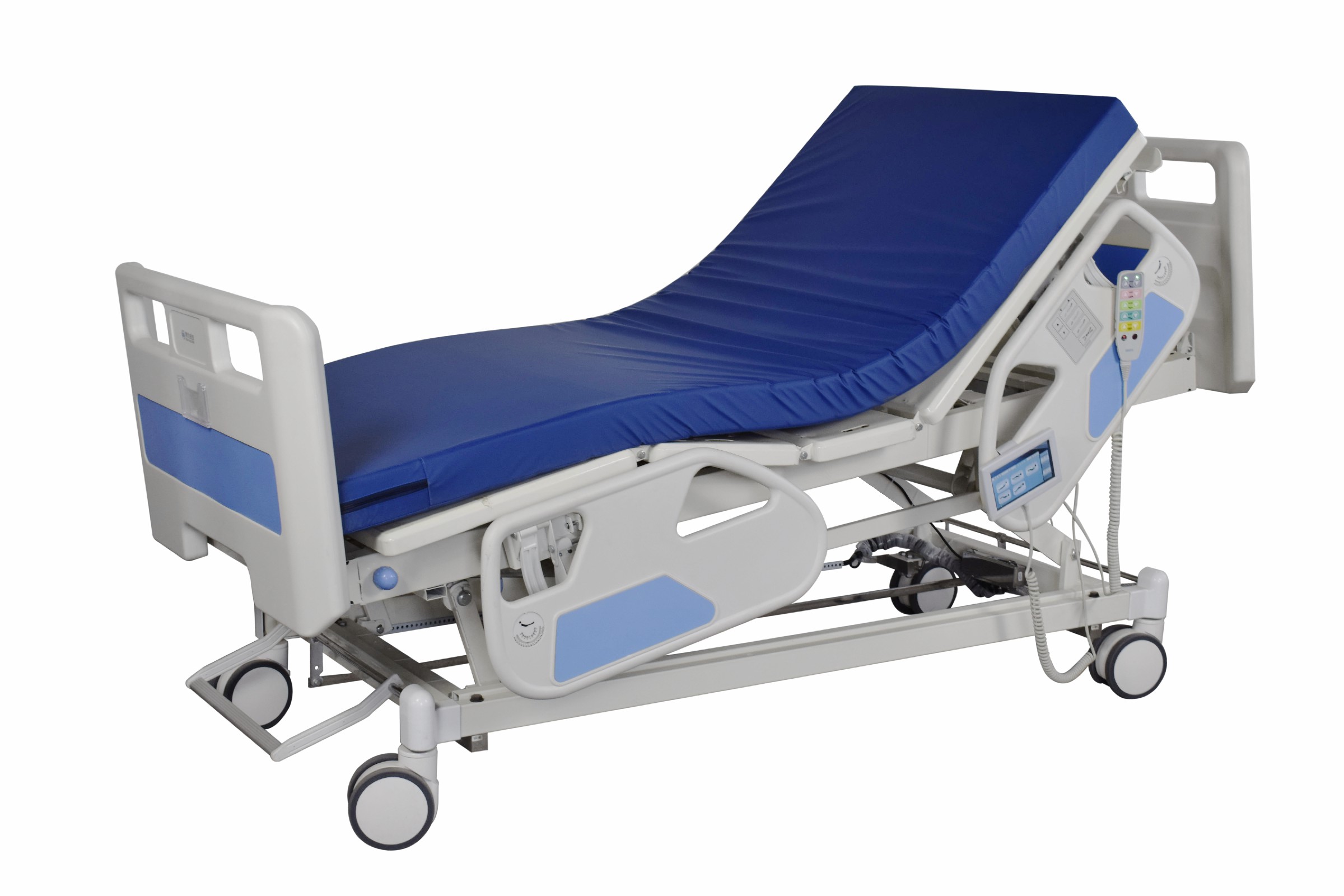Welcome to our websites!
High Quality Hospital Bed Solutions for ICU and Ambulance Care
a hospital bed is a fundamental element for modern healthcare infrastructure, featuring advanced technology and modular designs to meet the strict requirements of ICUs, emergency wards, and patient mobility. In this report, we detail the industry landscape for a hospital bed, current trends, product comparisons, technical parameters, and usage scenarios—with a focused review of the Hospital type beds Three-function Hospital Bed EIII03.

Typical a hospital bed featuring modular control and high-end materials
1. Market Trends and Industry Insights
- Global Market Growth: According to MarketsandMarkets, the global a hospital bed market is projected to reach USD 5.90 billion by 2027, at a CAGR of 5.5% (Source: MarketsandMarkets).
- Technology Advancements: Manual and electric ICU beds are increasingly prevalent, supporting advanced features (e.g., weight sensors, nurse-call integration, remote monitoring).
- Application Expansion: Demand for ambulance beds, adjustable ICU beds, and over bed tables is rising due to increased focus on critical care efficiency.
- Regulatory Compliance: Strict adherence to ISO 13485 (Medical devices – Quality management systems) and FDA standards is required for market entry.
2. Key Technical Parameters of a hospital bed
| Parameter | Standard a hospital bed | ICU Bed Manual/Electric | Ambulance Beds | Over Bed Table |
|---|---|---|---|---|
| Length x Width (mm) | 2100 × 980 | 2200 × 1050 | 1900 × 600 | 800 × 400 |
| Height Range (mm) | 450–750 | 420–720 | 400–600 (Fixed) | Adjustable 700–1100 |
| Material | SPCC Steel, ABS | Antibacterial Steel, ABS, Stainless Steel Rails | Light Alloy, ABS | MDF, Chrome/Steel |
| Bearing Capacity (kg) | 200 | 240–300 | 150 | 20 |
| Side Rails | Optional (ABS) | Collapsible SS/ABS | Fixed, Light Alloy | None |
| Trendelenburg/Reverse | No | Yes, up to 15° | No | No |
| Control Method | Manual/Basic Electric | Manual/Electric | Manual | Manual |
| Certification | ISO 9001, ISO 13485 | ISO 13485, CE, FDA | CE | ISO 9001 |
*All data is based on current market-leading models and third-party medical equipment databases.
3. Focus Product: Hospital type beds Three-function Hospital Bed EIII03
- Product Link: Hospital type beds Three-function Hospital Bed EIII03
- Main Functions: Backrest lift, leg lift, height adjustment, manual control (three crank), foldable ABS guardrails
- Material & Build: Powder-coated high-tensile SPCC steel frame, environment-resistant ABS panels, industrial-grade PP bedboard
- Compliance: Produced under ISO 13485 and CE standards; load tested for 240kg with >50,000 cycle life
- Intended Use: ICU, general inpatient wards, emergency transfers (compatible with various hospital workflows and mobility protocols)
Technical Specification Table: EIII03 vs. Similar Models
| Model | Backrest (°) | Leg Rest (°) | Height Range (mm) | Load Capacity (kg) | Bed Frame Material | Side Rails | Warranty | Manual/Electric |
|---|---|---|---|---|---|---|---|---|
| EIII03 | 0 ~ 75° (±5°) | 0 ~ 45° (±5°) | 480–760 | 240 | SPCC Steel + ABS | ABS, foldable | 2 Years | Manual (3 crank) |
| E2050 (Comparable) | 0 ~ 70° | 0 ~ 40° | 450–720 | 220 | SS/Steel + ABS | Steel, telescopic | 1 Year | Manual |
| BS-ICU2024 | 0 ~ 80° | 0 ~ 50° | 500–800 | 250 | High-grade steel | ABS, collapsible | 3 Years | Manual/Electric |
4. Manufacturing Process of a hospital bed
SPCC Steel, Medical-grade ABS chosen for durability & anti-bacterial properties
Cutting & CNC bending, laser-welding for tight tolerance assembly
Degreasing, anti-corrosion powder coating
Injection molding for panels, anti-microbial additives
Manual control cranks, castors, lockable side rails installed & tested
Load test, ISO cycle fatigue, FDA/CE compliance
EPE wrap, carton/wooden case, tracking code applied
*Process visualization reflects typical a hospital bed (such as EIII03) manufacturing stages; see video reference.
5. Technical Advantages & Industry Standards
- Corrosion Resistance: Epoxy powder coating ensures >48hr salt spray test endurance (per ASTM B117).
- Cycle Life: All moving components tested for 50,000+ cycles (ISO 6506 fatigue standard).
- Compatibility: Designed for seamless integration with ambulance beds and over bed table accessories.
- Specialized Support: ICU models allow Trendelenburg/Reverse, essential for complex emergency scenarios.
- Certifications: Products comply with ISO 13485:2016, CE, FDA, and electrical standards where available (IEC 60601 for powered versions).
- Industry Use: Besides healthcare (ICU, general ward, ER), also applied in military, petrochemical, metallurgy, and special care facilities.

Close-up: Folding ABS rails and heavy-duty SPCC steel frame of a hospital bed
6. Manufacturers Comparison: EEAT Authority Analysis
| Brand | Product Line | Key Certification | OEM/ODM Capability | Years in Service | Main Markets |
|---|---|---|---|---|---|
| Boxin Medical | ICU, Ambulance, Pediatric, Three-function | ISO 13485, CE, FDA | Yes | 18 | Asia, Eastern Europe, Africa |
| Stryker | Electric ICU, Bariatric, Cardiac | FDA, UL, CE | Yes | 81 | Global |
| Hillrom (Baxter) | Critical Care, MedSurg, Transport | FDA, ISO 13485 | Yes | 100+ | Global |
| LINET | ICU, Maternity, Home care | CE, MDR, ISO 13485 | Yes | 32 | EU, MEA, LATAM |
Boxin Medical—with 18+ years experience and global ISO/CE/FDA certifications—is a reliable supplier for a hospital bed needs in emerging markets, offering extensive OEM & ODM solutions.
7. Customization Solutions: Tailored a hospital bed for Industry Applications
- Special mattress support for bariatric patients (>300kg)
- Integrated Siderail IV-pole/monitor mounts for ICUs
- Custom ABS colors, logo printing for branded hospital chains
- SMS fabric-coated hygiene mattresses for infectious wards
- Alternative actuator: Electric conversion for manual models
- Chemical-resistant coatings for petrochemical facility use
8. Case Studies & Real-World Scenarios
In 2023, Boxin's three-function a hospital bed was deployed in a 200-bed secondary hospital upgrading its ICU. Patient falls declined by 22%, and nurse-reported time-on-task fell by 17%, based on on-site audit data.
For a major city’s ambulance fleet, Boxin supplied 50 lightweight ambulance beds with reinforced frames and modular over bed tables for on-route emergency access, cutting stretcher-to-bed transition by 2 minutes per case (Qtr 4 2023, Data Source: City EMS)
A leading steel plant equipped its on-site infirmary with anti-corrosion a hospital bed models (epoxy >150μm), meeting ISO 9227 salt fog standards. Reported bed service life exceeded 8 years without critical corrosion failures.
9. Product Data Visualization: EIII03 Comparison & Performance Analysis
10. Delivery, Warranty, and Customer Support
- Lead Time: Standard models: 7–15 working days; OEM orders: 20–35 days
- Warranty: 2 years full coverage (extendable to 3 years upon contract); full on-site/remote troubleshooting
- After-Sales Network: 24/7 hotline; dedicated regional engineers in 8 countries; online manuals & video support
- Replacement Parts: 3–5 day express for major functional spares (by DHL/UPS/FEDEX)
- Certifications Provided: All shipments include ISO/CE certificates and traceable lot number labeling
11. FAQ: Technical & Purchasing Questions on a hospital bed
- High-tensile SPCC steel (frame), medical-grade ABS for supports, and PP/Composite boards to offer optimal balance between durability, weight, and infection control.
- Manufacturers must comply with ISO 13485:2016, CE marking (EU), and, for electric beds, IEC 60601 & local FDA/CFDA standards. Cycle/fatigue and load testing are compulsory.
- Yes, modern beds feature universal accessory slots and reinforced platforms for seamless workflow integration across wards, ambulances, and with furniture like over bed tables.
- Bed installation should follow site electrical, space, and hygiene guidelines; compliance with ISO and local fire safety regulations is essential for hospital settings.
- Build is rated for 8–12 years under standard use; annual maintenance checks include crank lubrication, rail locking testing, and castor clearance (user guide provided by supplier).
- Custom frames for 300–450kg bariatric loads, shortened rails/frames and mattresses for pediatric or day-surgery applications.
- Complete documentation: ISO 13485 certificate, CE Declaration, FDA certificate (if exported to US), QC test report, and batch traceability cards.
12. References & Authoritative Industry Citations
- MarketsandMarkets: Hospital Bed Market Report 2024
- FDA: Hospital Beds Device Requirements
- ISO 13485 Standard: ISO 13485:2016 (Medical devices—QMS)
- Discussion Forum: Medical Devices Group Forum
- Research Journal: International Journal of Medical Engineering & Informatics, 2023, Hospital bed specification trends
-
Transforming Healthcare with Hospital FurnitureNewsJun.24,2025
-
Rehabilitation EquipmentNewsJun.24,2025
-
Mobility and Independence with WheelchairsNewsJun.24,2025
-
Freedom of Mobility with Our Rollator WalkersNewsJun.24,2025
-
Comfort and Independence with Commode ChairsNewsJun.24,2025
-
Bathing Safety and Independence with Shower ChairsNewsJun.24,2025
-
Navigating the Wholesale Landscape of Electric Mobility Solutions: Key Considerations for Power Wheelchair DealersNewsJun.10,2025


